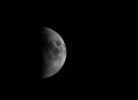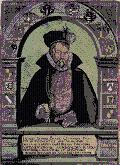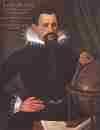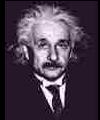
 |
ephemeris.com |
| NASA/JPL |
| Home | Ephemeris | Solar System | History | Space & Time | Software | Books | Links | Feedback |
| ephemeris - Latin, originally from the Greek "ephémeros, -on," daily. An almanac of the daily motions of the planets and stars. |
| ephemeris.com - A website devoted to information about time and motion in the universe. |
|
Planetary Theories:
Copernicus, Galileo, Brahe, Kepler, Newton, and Einstein.
Ancient astronomers sought to discover rules for the motions of planets. One of the more fanciful theories was that of the ancient Greek astronomer Eudoxus, who thought that the planets traveled in celestial spheres, which made heavenly music as they turned. During the European Renaissance, astronomers began to question whether the Earth was the center of the Universe as previously believed. With his telescope, Galileo Galilei observed the four moons of Jupiter now known as the Galilean moons, Io, Europa, Ganymede, and Calisto (shown at left in a NASA composite photo, from left to right, top to bottom) orbiting around Jupiter. He presented this discovery as evidence to an unreceptive world that everything did not revolve around the Earth.
Copernicus realized that if the Sun were at the center of the Solar System, and the planets revolved around the Sun, then the planets always moved in the same direction. Copernicus knew that his idea was radical and that it would be unpopular. Friends who heard of his discovery pleaded with him to make his findings public. Fearing arrest or worse punishment, Copernicus waited thirty-six years to publish his theories. Copernicus, a Roman Catholic priest by the end of his life, finally sent a copy of his manuscript, entitled De revolutionibus orbium coelestium, to a Lutheran printer in 1543 as he was dying. The Lutheran Church did not support a heliocentric Solar System model, but would be less punitive than the Roman Catholic Church. Copernicus received his published book back from the printer on May 24, 1543 — the last day of his life. His radical idea that the planets revolved around the Sun (not the Earth), backed up with analysis of observations, began what we call today the Copernican Revolution.
|
He first got the idea that lighter objects could not fall slower than heavier objects by seeing that hail stones appeared to fall at the same rate whether they were large or small. Benedetti Giambattista had already demonstrated this fact in 1553, and published his results, but Galileo performed further experiments. Legend has it that Galileo dropped cannon balls of different weight from the Leaning Tower of Pisa. Although experimenters before him, and even one of his students did drop balls of different weight from the Tower, there is no actual record of Galileo performing such an experiment.
To Galileo, his work on gravity would not have appeared related to his observations in astronomy. Several years later though, Sir Isaac Newton would tie the two together, showing that planetary motion could be explained by the law of gravitational attraction. In fact, Newton used Galileo's Law of Inertia (showing that the force required to move an object was proportional to the object's mass) in his First Law of Motion. Galileo Galilei died in 1642, the year that Isaac Newton was born.
While a professor of astronomy at the University of Padua, Italy in 1609, Galileo heard of the microscope and "spyglass." Working from a vague description, he produced his own "spyglass" that had thre times magniication, then built another wth ten times magnification. He presented this to his city's government as a military aid.
Galileo became the first person to study the stars and planets through glass lenses. He began by using his spyglass to examine the Moon, where he discovered craters. He found that the Milky Way was actually a collection of thousands of closely spaced stars, "almost too numerous for belief."
On the fateful night of 7 January 1610, he trained a new 30 power telescope on Jupiter and discovered three of the four easily visible moons of Jupiter, now known as the Galilean Moons. The next night he observed them again, and saw that one of the moons had traveled to the other side of Jupiter, so all three were on the same side. He reasoned that the motion of these moons around Jupiter proved that not everything revolved around the Earth.
Galileo also discovered the rings of Saturn, but died not knowing that they were rings. He saw them at first, then saw them disappear as Saturn's rings were on edge as seen from Earth, then saw them reappear a couple of years later. After that, he saw them as seemingly two cup handles. It wasn't until after his death that telescopes became powerful enough to resolve these mysterious objects as rings.
Galileo supported the theory of Copernicus, that planets and the Earth revolved around the Sun. This, and his experiments that disproved other Aristotlan beliefs, brought him under investigation by the Roman Catholic Church in 1633. He was condemned for his beliefs and imprisoned, though this was later commuted to house arrest for life. In 1954, the Church deleted his works from the Banned Book List of the Inquisition. In 1992, Pope John Paul II declared that Galileo Galilei was "unjustly condemned" for supporting the Copernican model of the Solar System.
 Another astronomer familiar with Copernicus'
De revolutionibus orbium coelestium,
Tycho Brahe, Imperial mathematician in Prague in the
late 1500s, made painstaking observations of the Sun, Moon, and planets
throughout much of his life. He is shown at left in an illustration
from his Astronomiae insstauratae mechanica (1598).
Another astronomer familiar with Copernicus'
De revolutionibus orbium coelestium,
Tycho Brahe, Imperial mathematician in Prague in the
late 1500s, made painstaking observations of the Sun, Moon, and planets
throughout much of his life. He is shown at left in an illustration
from his Astronomiae insstauratae mechanica (1598).
Tycho Brahe did not support the new heliocentric theory of Copernicus. However, he did believe that philosophical arguments were not as valid as real observational data. Driven by a desire to solve the mystery of planetary orbits, he constructed the most accurate observatory that existed before the telescope's invention. His data was the most accurate that had ever been recorded at the time.
He published a paper in 1573, De nova stella, that described a supernova observation. This observation refuted the common belief that the heavens were fixed, never changing. His careful observations of the Moon allowed him to determine formulas for lunar motion with unprecedented accuracy. Tycho Brahe published his findings on the Moon's motion a year before his death.
After publishing his lunar observations, he began work on a theory that would explain his decades of careful planetary observations. He had already found that the Earth did not remain a constant distance to the Sun throughout a year, in 1591. However, he was not able to explain or further investigate this phenomenon before his death on October 24, 1601. To the end, he believed that Copernicus was at least entirely correct. As he was dying, Tycho Brahe said to his assistant, Johannes Kepler, "Do not let me have lived in vain." While Kepler showed that Brahe's geocentric beliefs were not true, it was only by using his highly accurate data spanning decades that Kepler was able to develop his own theories of planetary motion. In that sense, Tycho Brahe had not endeavored all those years in vain, for he laid the groundwork necessary for Kepler's amazing mathematical discoveries.
 Johannes Kepler (shown in a painting at left)
had been interested in astronomy most of his life. He sought
theories that would explain planetary motions, and knew that testing theories
would require a collection of astronomical observations. The greatest
astronomical records in the world were those of Tycho Brahe. At the same
time, Brahe needed someone with Kepler's mathematical abilities to analyze
his extensive data. Kepler joined him as an assistant
in February 1600, the year before Tycho Brahe's death.
Johannes Kepler (shown in a painting at left)
had been interested in astronomy most of his life. He sought
theories that would explain planetary motions, and knew that testing theories
would require a collection of astronomical observations. The greatest
astronomical records in the world were those of Tycho Brahe. At the same
time, Brahe needed someone with Kepler's mathematical abilities to analyze
his extensive data. Kepler joined him as an assistant
in February 1600, the year before Tycho Brahe's death.
Kepler believed in the Copernican system, which placed the Sun at the center of the Solar System. He had begun investigating the motion of Mars before Tycho Brahe's death. Kepler's understanding of planetary motion accelerated when he realized that the orbit of Mars was in a plane tilted slightly from the plane of the Earth's orbit around the Sun. He published his observations on Mars in 1609.
Why was predicting the orbit of Mars such a great achievement? It was because no other planet exhibits as severe retrograde (backwards) motion as Mars when viewed from the Earth. Mercury and Venus always stay close to the Sun. Jupiter and Saturn, the other known planets at the time, are further away. Mars is the closest planet to the Earth that is farther from the Sun than the Earth, and so its retrograde motion appears the greatest. There was no other planetary orbit that was more difficult to predict than the orbit of Mars.
Kepler then sought to discover general rules that explained the motions of all the planets. After trying numerous theories, Kepler discovered three incredible laws of planetary motion. Today these are often referred to as K1, K2, and K3:
Kepler proposed that planetary motion was caused by magnetic force from the Sun.
Astronomers calculated reference ephemerides by using elliptical orbits for almost 400 years after Kepler's discovery. It wasn't until the 1970s that computer technology and NASA's need to accurately send spacecraft to planets that more accurate computer simulations of mutual gravitational attraction of Solar System bodies became practical. To this day, positions of asteroids of unknown mass are still calculated using Kepler's elliptical orbits.
 Later in the 1600s, Sir Isaac Newton (shown in a painting at left)
formulated the principles of gravitational attraction. Newton's breakthrough
came from contemplating Kepler's Third Law. He said that he first found in
1680 that the pattern of a planet under gravitational attraction from the Sun
would be an ellipse with the Sun at one focus. Unfortunately, he lost the
proof in his office. At the urging of his friend, astronomer Edmond Halley
(of Halley's Comet fame), in 1684 Newton spent three months
reconstructing the proof.
Later in the 1600s, Sir Isaac Newton (shown in a painting at left)
formulated the principles of gravitational attraction. Newton's breakthrough
came from contemplating Kepler's Third Law. He said that he first found in
1680 that the pattern of a planet under gravitational attraction from the Sun
would be an ellipse with the Sun at one focus. Unfortunately, he lost the
proof in his office. At the urging of his friend, astronomer Edmond Halley
(of Halley's Comet fame), in 1684 Newton spent three months
reconstructing the proof.
Then, in a burst of inspiration from 1685-86, Newton wrote his revolutionary Philosophiae Naturalis Principia Mathematica (Mathematical Principles of Natural Philosopy), commonly referred to as Principia Mathematica or simply Principia.
In his Principia, Newton first outlined three axioms, or Laws of Motion:
 Newton held that Space and Time were fixed, rigid, never changing. By the
1900s, telescopes became powerful enough to observe one more revolutionary
principle that changed all that: Einstein's Theory of Relativity, which he
built upon earlier work by his friend Hendrick Lorentz showing that objects
could not travel faster than the Speed of Light.
Newton held that Space and Time were fixed, rigid, never changing. By the
1900s, telescopes became powerful enough to observe one more revolutionary
principle that changed all that: Einstein's Theory of Relativity, which he
built upon earlier work by his friend Hendrick Lorentz showing that objects
could not travel faster than the Speed of Light.
In his Theory of Relativity, Albert Einstein demonstrated mathematically that the force of gravitational attraction could be viewed as a distortion of space and time around an object, so that another object (or light) was curved by following a path of least resistance in this warped space-time continuum. At one point in unravelling the relationship between gravitational attraction and relativity, showing that Space and Time were not at all constant, Einstein said: "Newton, forgive me."
Einstein first proposed a test of his Theory of Relativity by observing stars during the Total Solar Eclipse of 29 May 1919. The eclipse was observed from Brazil and West Africa under the direction of the astronomer Sir Arthur Eddington. The observations verified Einstein's Theory of Relativity. Today, ultra-accurate observations take this relativistic bending of light into account. The Sun bends the light of a nearby star by less than two arcseconds. Atmospheric refraction bends light far more, so this effect is not easy to observe.
| Home | Ephemeris | Solar System | History | Space & Time | Software | Books | Links | Feedback |
We're adding to this site constantly. If you have any comments or suggestions, please send email to mystars@ephemeris.com.
Copyright 2003-2004. All Rights Reserved.